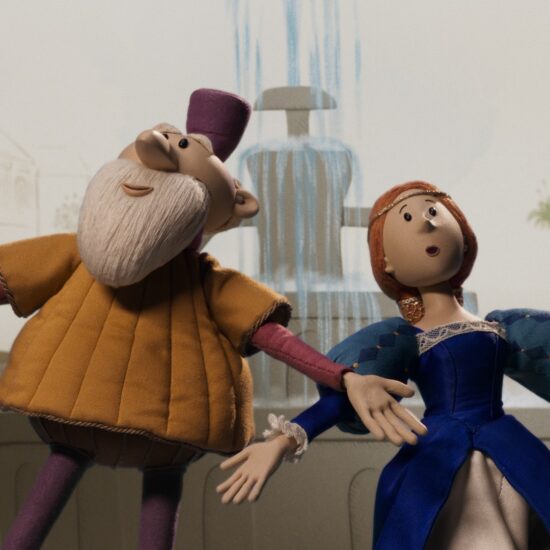
Thanks to the popularity of social media platforms and digital stores, animated videos have become the perfect medium to generate interest while getting your message across. They help you break down complex ideas into digestible pieces of information and generate interest in the story your brand wants to share — not only in terms of products and services but also in terms of content and brand narrative.
However, not all animated explainers are created equal. As effective as the style has proven to be, there are a handful of crucial elements that define how well your audience responds to these videos and how effective they turn out in the end.
In this piece, we will take a closer look at some of those elements and give you insight into improving your explainers in these five key areas.
Let’s jump right in!
1 – Structure Your Script Accordingly
Once you have chosen to make an explainer video, you need to start by creating the script that will guide the rest of your production process.
The most classic script structure for an effective explainer consists of 3 sections or acts. Act I, where you introduce the problem or pain point you are setting up to resolve. Act II, where you introduce your solution to that problem. Then finally, Act III, where you tie that solution to your brand and prompt viewers to take action.
And all of it should take no more than 150 to 300 words on average.
While it might sound simple, it is a formula that has been proven to work really well for more than a decade, and you’ll do well to master it before trying to change it.
Beyond structure, you’ll also want to write in a conversational tone that mirrors your audience’s style. You have to write your video’s script in the way you want the protagonists to speak to your viewers. If possible, avoid complex elements like compound sentences, technical jargon, and any info that isn’t essential to get your message across.
2 – Deliver The Correct Message
The average length of a good explainer usually sits between 90 and 120 seconds. If this type of video lasts longer than that, it can drive the audience to lose interest, even if the content is attractive.
When creating a video explainer, your core message must be accessible as soon as possible and be conveyed in a simple, short, and easy-to-follow way. That means you only have a short while to get your point across, so you have no time to waste.
Regardless of the specifics of your niche and what you want to show, this type of content works because they go straight to the point! So, to help you make the most of this limited runtime, remember that your video communicates with more than the words in your script.
Think about the specific purpose you are making your explainer video for. Once you put that core idea on paper (through your script), think about other elements that can help you convey information without relying on words alone.
For example, introducing a character that looks and behaves like your audience in a typical situation that conveys a common scenario, the problem itself, and then the final resolution using visual elements (like the setting for your video) and using sound cues to place emphasis on key information.
3 – Use Engaging Stories to Keep People Hooked
One of the core reasons behind explainer videos’ effectiveness is how the style leverages storytelling. Understandably, this is also why the most experienced explainer studios enhance their explainers through narratives their viewers can easily relate to
The practice itself has been going on for well over a decade for this type of content. Yes, you want to tell something important to your viewers, but that something will only stay with them if your video brings up emotions while telling a story they’ll remember.
The specifics of what makes an engaging story will vary depending on who you are making the video for. However, the secret ingredient for explainers is working around characters and situations that your viewers can immediately recognize as their own.
If your video starts with a person that looks, talks, and behaves like your audience, you’ll have an easier time capturing your viewers’ attention. If your video tells a story viewers can see themselves going through or experiencing, they will remember it long after watching.
4 – Showcase The Value Of Your Brand (But Do It Right!)
A good explainer conveys your message to the viewer. A great explainer does that while also getting people to know your brand and generating awareness around your products and services benefits.
However, you need to be smart about how you go about it!
One of the key benefits of the explainer formula lies precisely in how they let you subtly promote your brand or product without coming across as a straight-up advertising piece.
While the viewer’s attention is mostly placed on the story and message that you want to get across, use other branding elements to flavor your explainer and make it feel unmistakably yours.
There are plenty of ways to go about it, but we’ve found that placing your logo in the lower right corner, using your company’s color palette to inform the visual style of the piece, and using jingles and background music at key moments (like, when presenting your solution!) are all great ways to effectively brand your explainer video without turning it into an ad.
5 – Choose the Framework That Suits Your Piece
That is to say that, depending on the goal of your video, you will address the subject differently.
For instance, if you aim to help people to understand some topic, you will highlight the features and the most important aspects to get people to learn the basics. But, if you want to explain how and why your services are the best option in the market, you will use your video’s narrative to highlight all the benefits and positive effects of its use.
- Say you are making an explainer to get people familiar with your brand of sponges through social media channels. The same video can look very different if you are trying to produce content for customer delight than if you are trying to promote the product and generate a sale.
The former will most likely revolve around showing how to use the product to the fullest. Providing tips and techniques to wash more dishes efficiently, that sort of thing. The latter will most likely revolve around communicating why that particular kitchen sponge is the best option around: it cleans faster, is softer than the competition, etc.
Even if both outcomes are about the same object, people tend to make different choices based on how the message is framed. So, always make sure the way you frame your explainer fits the objectives you are pursuing with it in the first place!
Parting Thoughts
Overall, animation videos are a growing trend for a reason. They can have a massive impact on any outreach strategy, turning things in your favor and boosting your brand’s reach, but that’s only the case if you customize the formula to suit your needs and your audience’s preferences.
Hopefully, by polishing and tweaking the elements we’ve discussed today, you’ll be far better equipped to make the most out of the explainer formula and start making explainers your audience will respond to!
Victor Blasco is an audiovisual designer, video marketing expert, and founder/CEO of the explainer video production company Yum Yum Videos. Besides running the business, he’s a lifelong student of Chinese philosophy and a passionate geek for all things sci-fi.














